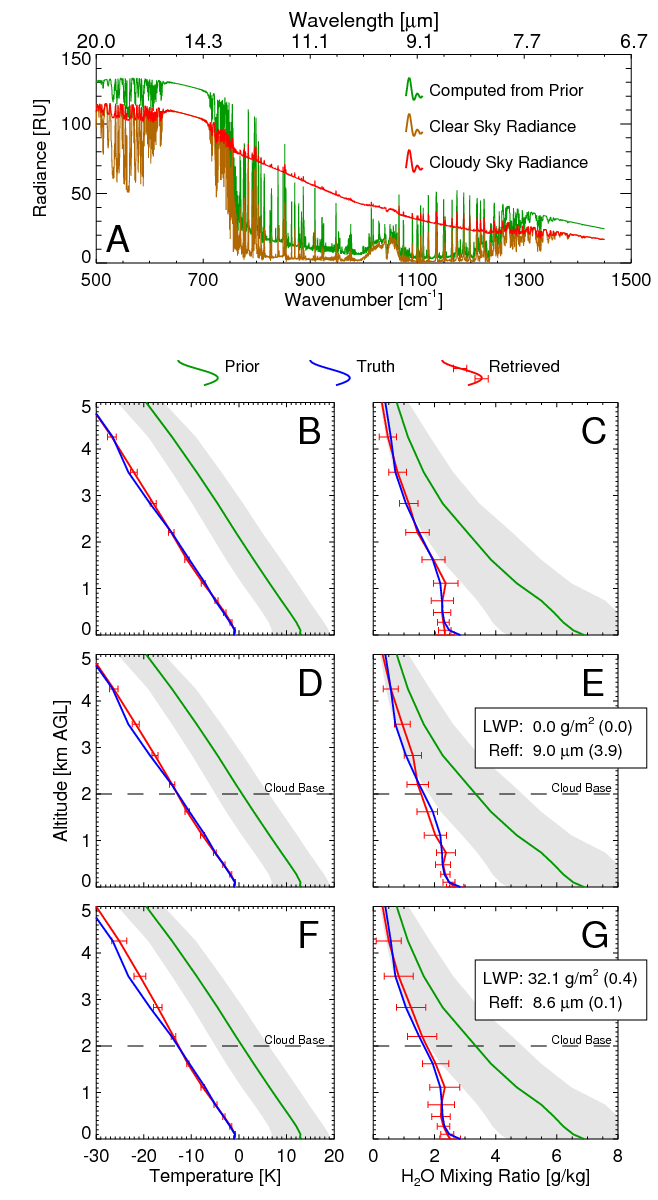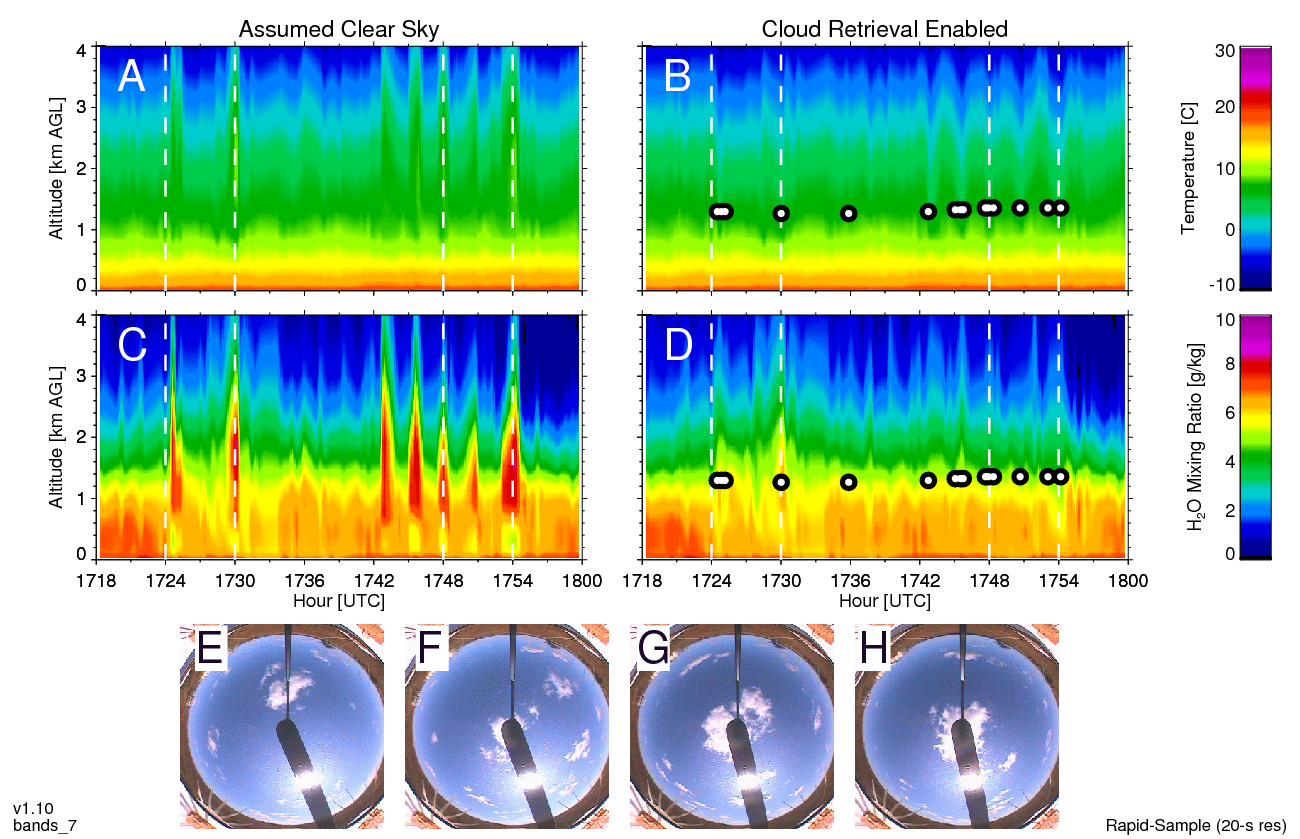Retrieving Thermodynamic Profiles in the Boundary Layer in Clear and Cloudy Conditions
Submitter:
Turner, David D. — NOAA Global Systems Laboratory
Area of research:
Radiation Processes
Journal Reference:
Science
The thermodynamic structure of the atmospheric boundary layer (BL; the lowest 1-3 km of the atmosphere) rapidly changes due to a wide range of processes, and many studies require accurate profiles of temperature and water vapor at high time-resolution in order to understand the processes at work in the BL. These profiles can be derived either using active remote sensors such as the Raman lidar, or from passive spectral radiometers such as multi-channel microwave radiometers or infrared spectrometers (such as the Atmospheric Emitted Radiance Interferometer, or AERI). The passive instruments are more affordable than the active instruments, but the information content in the passive observations (the vertical resolution) is lower. Loehnert et al. evaluated the information content in microwave radiometers (MWRs) and AERIs for thermodynamic profiling in clear sky conditions, demonstrating AERIs have 2-3 times more information (better vertical resolution) than MWRs. However, this study was limited to clear sky conditions as the AERI retrieval was, at the time, limited to cloud-free periods due to the large infrared contribution by clouds.
Impact
A new algorithm was developed to retrieve temperature and humidity profiles from the AERI in both clear and cloudy conditions. This algorithm, called AERIoe, retrieves both the thermodynamic profiles and cloud properties simultaneously. The algorithm uses an optimal estimation framework which allows the uncertainties in the observed AERI radiance and the forward model to be propagated to provide uncertainties in the retrieved profiles. A key component of this algorithm is its ability to overcome a poor first guess of atmospheric state and still converge. This was the primary limiting factor in previous AERI-based retrieval efforts. Furthermore, the optimal estimation framework allows the information content of the retrieval to be examined fully, and demonstrates that 85 percent and 70 percent of the information in the AERI observations for temperature and humidity, respectively, is within the lowest 2 km of the atmosphere. Thus, the AERI is truly a boundary layer profiler with little information on the temperature and humidity structure in the mid-to-upper troposphere.
AERIoe retrievals were compared against radiosondes in both clear and cloudy conditions. In clear sky conditions, the mean bias for temperature and humidity in the lowest 2 km is less than 0.2 K and 0.3 g/kg, respectively, and the root-mean-square (RMS) errors are less than 1 K and 0.8 g/kg. In cloudy conditions, the bias and RMS errors are almost the same below the cloud base.
Summary
The AERIoe algorithm allows thermodynamic profiles to be retrieved under most non-precipitating conditions. During precipitating conditions the AERI's hatch closes to protect the foreoptics of the instrument. These profiles can be retrieved at high temporal resolution, but are more typically derived at 5-minute resolution to improve the signal-to-noise in the AERI spectra. This algorithm allows the multiple AERIs in the ARM Facility to help characterize the BL and how the thermodynamic structure of the BL evolves.



